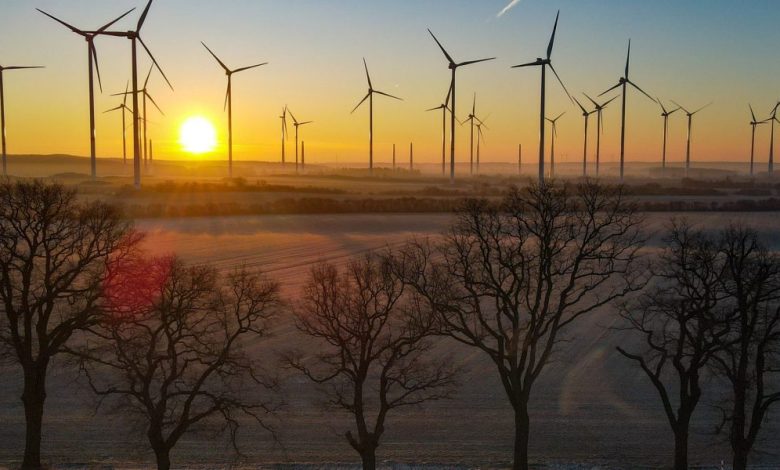The dark side of ESG investing threatens to undermine clean tech strategies

The dark side of ESG investing has the potential to undermine an entire generation of clean tech strategies.
Adam Matthews, chief responsible investment officer at the Church of England Pensions Board, said the risks posed by the mining industry’s boom in renewable energy weren’t getting nearly enough attention. The consequence, according to the 47-year-old, is that portfolios that are supposed to uphold ecological, social or good governance principles could be exposed to human rights violations and environmental damage via supply chains.
It’s an issue that has prompted Matthews and other investors to form an alliance recently to bring the issue into the spotlight and make it much harder for fund managers to plead ignorance. The United Nations-advised Global Investor Commission on Mining 2030 plans to uncover and tackle the so-called systemic risks arising from the link between mining and the clean energy industry.
“The auto sector is massively exposed, as are wind turbine manufacturers,” Matthews said in an interview. There is also “huge demand” for minerals like copper and lithium, which are “hugely important for low-carbon technologies.”
But “we should have no illusions” that such minerals and metals often come from areas where “unstable government structures” are the norm and where the dynamics surrounding mining “play a role in conflicts,” he said. The renewable energy boom now underway risks “fueling and exacerbating” that instability, he said.
The building blocks for expanding wind, solar and electric vehicle production will require significantly more minerals and metals than combustion technology. The World Bank estimates that the amount of raw materials needed for the green transition will increase by 500% by mid-century. And with new legislation like the US Inflation Reduction Act spurring demand for clean technology, that pressure will only increase.
“We have some companies that are good practitioners, but that’s not representative of the entire sector,” Matthews said, declining to single out individual companies.
Analysts at BloombergNEF estimate that the road to net zero by 2050 could require mining 5.2 billion tons of metals, which could be worth as much as $10 trillion.
Some companies try to reduce their risks either by looking for ways to bypass raw materials or by directly controlling the supply lines. Tesla Inc. is redesigning batteries to avoid cobalt and nickel. General Motors Co. recently invested $650 million in Lithium Americas Corp., which is developing a mine in Nevada.
Manufacturers in the renewable energy industry and their investors are already facing a more stringent regulatory environment in some key jurisdictions. The European Union has made it clear that it does not want to fall into the same dependency on commodity suppliers like lithium that it has suffered with oil and gas. In September, the bloc introduced the Critical Raw Materials Act, with the express aim of ensuring “sustainable access” to the minerals and metals needed to achieve carbon neutrality.
The EU’s corporate sustainability due diligence policy is another way the bloc wants to ensure companies screen their supply chains for ESG risks.
Such initiatives follow shocking evidence of human suffering as a result of mining. Last year, testimony collected by the non-profit organization Human Rights Watch described the prevalence of child labor in the DRC’s mining industry, which accounts for about 70% of the world’s cobalt reserves. Most of it is produced in industrial projects run by multinationals such as Glencore Plc and CMOC Group Ltd. to be controlled.
Indonesia, which produces about half of the world’s nickel, recently claimed it has overtaken Russia and Australia to become the world’s second largest source of cobalt.
In South America, on the other hand, mining is having a devastating impact on the local population. In 2019, a mining waste dam at a Vale SA iron ore mine in the city of Brumadinho, Brazil, collapsed, killing 270 people. Vale subsequently agreed to pay the state of Minas Gerais $7 billion to be used in socioeconomic and environmental programs to repair the damage caused by the dam failure.
Meanwhile, China, which is the world’s largest refiner of minerals and metals needed in batteries, relies on coal to power the power plants that do that work. And coal companies like Thungela Resources Ltd. have even attempted to portray the dirtiest fossil fuel as an integral part of the renewable energy boom.
Matthews said miners clearly play an integral role in the transition to a more sustainable economy, so it is not reasonable for ESG investors to exclude them from portfolios. However, sometimes there is no choice, and the Church of England Pensions Office gave up its entire Vale stake when the full horror of the 2019 dam failure became clear, spearheading a campaign to improve mine safety.
The aim is to uncover and isolate the bad actors and apply much higher standards of accountability as mining’s critical role in the green transition increases.
While “we need mining,” the process of extracting raw materials for the renewable energy revolution can’t be “an insane mess to meet demand if there’s no consultation with the community,” Matthews said. Otherwise, the industry will “lose the social license” to continue its work, he said.
Learn how to navigate and build trust in your organization with The Trust Factor, a weekly newsletter exploring what leaders need to succeed. Login here.



